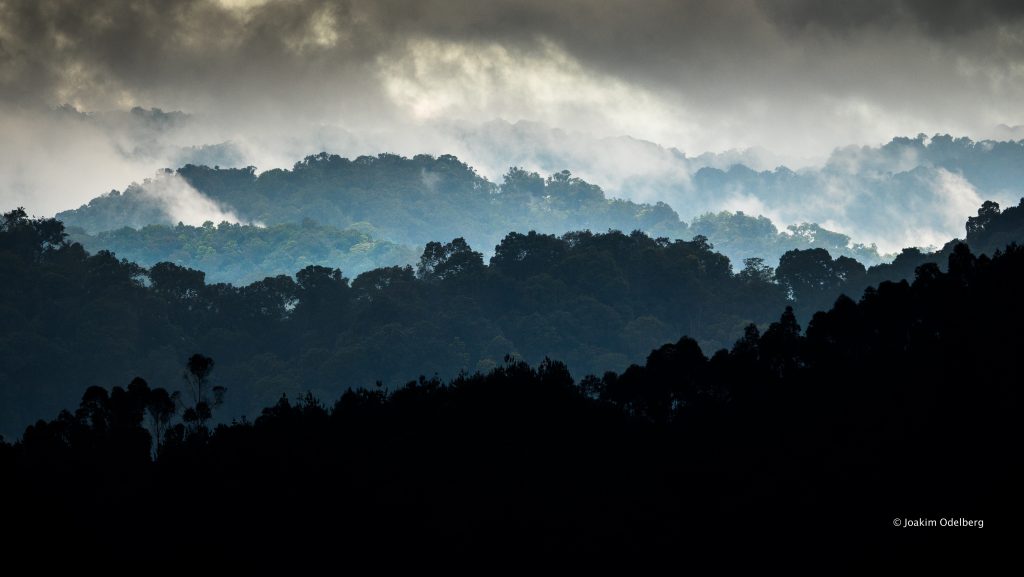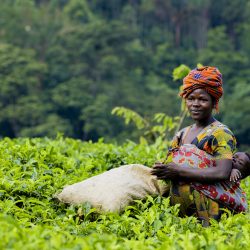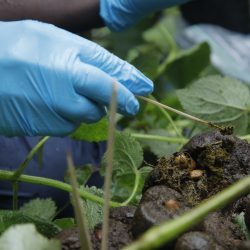How Secure is the Future for Mountain Gorillas?
Blog | 14/10/22
About three decades ago, mountain gorillas were close to extinction with just about 680 of these fascinating great apes remaining in the wild. However, through various conservation approaches and concerted efforts the fragile species is bouncing back. Today there are more than 1,000 mountain gorillas in the wild. In 2018, the apes were down listed from ‘Critically Endangered’ to ‘Endangered’ in the IUCN Red List of Threatened Species IUCN Red List of Threatened Species
Mountain gorillas represent a culturally, ecologically, and economically important resource to their three range countries of Uganda, Rwanda, and the Democratic Republic of Congo (DRC). For instance, they are a magnate for high-value tourism. However, since their discovery in 1902, the species have endured several threats including habitat destruction and encroachment, war, diseases, and poaching. According to Dr. Andrew Seguya, Executive Secretary, Greater Virunga Transboundary Collaboration “gorilla safety and the prospects for the species in the early 2000s were dire. There were immense problems”.

There were hardly any systematic conservation efforts going on and most parks were under the constant threat of encroachment from human activity such as agriculture. Poaching for wild meat and illegal hunting trophies, trade in live infants insecurity and civil unrest were also rampant. This, however, has changed over the years. Parks have been gazetted with clear boundaries and effective conservation work carried out, including developing tourism to fund conservation, improving transboundary collaboration between the range states as well as conducting monitoring and research in the region. Countries have also introduced routine park patrols to curb illegal activities, health monitoring to ensure the health of mountain gorillas and increased staff capacity to manage the protected areas.
“There are more collaborative conservation efforts now than before across key sectors like health, law enforcement and tourism. All this and more have allowed for an increase and stability in the gorilla population” says Dr. Andrew Seguya.
The integrity of several parks has also been restored and enhanced. With most of the indicators for their survival beaming green, one can say we are a step closer to achieving healthy, stable populations of mountain gorillas.
Despite all these impressive strides and indicators, mountain gorillas remain endangered and a conservation dependent species. Some conservationists argue that even though mountain gorillas seemingly have a future, it is still blurry considering the different prevailing threats and wavering conservation and political efforts.
Dr. Bernard Jasper Ssebide, Country Head Veterinarian, Gorilla Doctors – Uganda says that mountain gorillas can only have a secure future if the current conservation challenges are addressed, short of that, the long-term survival of the fragile species remains challenged. He explains that while most of the threats have been reduced or managed, diseases remain the biggest threat! This is due to the increased interaction (direct and indirect) between people and gorillas.

“Until 2001, there were no respiratory diseases among gorillas but today they are very common,” says Dr. Ssebide. “If not aggressively prevented or managed, diseases can be very devastating – they can wipe out an entire gorilla group or a number of them at the same time” Dr. Ssebide adds. Mountain gorillas share about 98.4% DNA with human beings, this makes them highly susceptible to human diseases. There is therefore urgent need to strictly enforce the established IUCN great ape visitation rules and to always apply the precautionary principle when visiting mountain gorillas.
Other prevailing challenges like conflict and civil unrest in DRC and climate change also pose a big threat to the future of mountain gorillas. For over a year now, insecurity in DRC has curtailed a lot of conservation and tourism activities in Virunga National Park. Following several rebel attacks and the tragic death of rangers, ranger posts were evacuated from the park and most activities including daily monitoring and clinical check-ins on the gorillas by the gorilla doctors ceased.
While the rate at which climate change affects gorillas and their habitats is still slow, the impact might be severe in the next 5-10 years if we do not deal with this crisis effectively. Climate change disrupts seasonality, which in turn affects vegetative cycles – such as the nourishment, flowering & fruiting cycles. With change in climate also comes disease. According to Joseph Arinaitwe, the Warden Ecological Monitoring & Research, local studies already indicate that the success rate of fruiting patterns has drastically reduced with many young fruits withering before maturity. This can imply that the reproductive rate of vegetation could be on a steady but least noticed loss. “Since mountain gorillas are 99.9% vegetarian, such disruptions in vegetative patterns automatically disrupts the way of life for the mountain gorillas” Joseph notes.

There is need for intensive joint efforts in addressing climate change as a region. Strong policies should be put in place where there are none, while strict enforcement of the same must be done to ensure holistic change. Climate change-oriented research to accumulate adequate knowledge and understanding of the drivers, impacts and mitigation actions for the threats emanating from climate change should also be explored.
Institutions that manage the conservation of the mountain gorillas should be strengthened because they set the agenda. Governments and conservation partners need to increase conservation funding and embrace/explore expanding the gorilla habitats even if it means establishing a buffer zone across the mountain gorilla parks to ensure the safety of the parks and the mountain gorillas.
Because parks have other values beyond the monetary value, development in and around the parks should always be guided by robust Environmental and Social Impact Assessments, allowing them to strike a balance between conservation and development.
Park edge communities need to continuously be engaged, involved, and supported to realize the benefits from mountain gorilla conservation to ensure their continued support towards mountain gorilla conservation.
To secure a stable future for mountain gorillas we need not to be complacent but rather acknowledge the existing and emerging threats and then collaboratively work to address them with the urgency that they deserve. We also need to continue to strengthen the existing conservation measures so that the successes are sustained long into the future.




